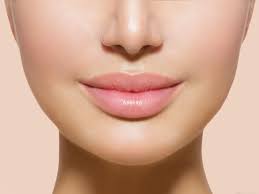Introduction
Lip fillers have become a popular cosmetic treatment for enhancing the fullness and shape of the lips. Despite their widespread use and generally favorable outcomes, it's important to understand that lip filler injections can come with a range of reactions, including swelling, bruising, and other temporary side effects. Recognizing what to expect, understanding the underlying causes of these reactions, and knowing how to manage them can significantly impact your comfort and satisfaction with the procedure. This article provides an in-depth look at common Lip Fillers in Oman reactions, including their causes, management strategies, and what you can do to minimize their impact.
Common Reactions to Lip Fillers
- Swelling
Swelling is one of the most common reactions following lip filler injections. It occurs as a natural response to the injection process and can vary in severity and duration.
- Causes: Swelling results from the body's inflammatory response to the filler injection. The filler material, along with the needle or cannula used, can cause minor trauma to the lip tissue, leading to localized inflammation.
- Duration: Swelling typically begins within a few hours after the injection and can peak within 24 to 48 hours. Most swelling subsides within 1 to 2 weeks, though some residual swelling may persist for a few more days.
- Management: To manage swelling, apply ice packs to the affected area for 10-15 minutes at a time during the first 24 hours. Keeping your head elevated and avoiding strenuous activities can also help reduce swelling. Over-the-counter anti-inflammatory medications, such as ibuprofen, can be used if recommended by your practitioner.
- Bruising
Bruising is another common reaction and occurs when blood vessels are damaged during the injection process, leading to the accumulation of blood under the skin.
- Causes: Bruising is caused by the needle or cannula puncturing small blood vessels in the lips. The extent of bruising can vary depending on the practitioner’s technique and the individual's susceptibility to bruising.
- Duration: Bruises typically appear within a few hours to a day after the procedure and can last for about 1 to 2 weeks. The bruise may change color as it heals, transitioning from red to purple and eventually yellow or green.
- Management: Applying ice to the bruised area can help reduce the severity of the bruise and limit its spread. Avoiding blood-thinning medications, such as aspirin, before the procedure can help reduce the risk of bruising. If bruising occurs, over-the-counter arnica creams or gels may aid in reducing the appearance of bruises.
- Tenderness and Sensitivity
Tenderness and sensitivity around the lips are common and generally resolve on their own.
- Causes: Tenderness is a natural result of the injection process and the minor trauma inflicted on the lip tissue. Sensitivity can be heightened due to inflammation and the presence of the filler material.
- Duration: Tenderness usually lasts for a few days to a week, gradually improving as the swelling and inflammation subside.
- Management: Avoiding excessive touching or massaging of the lips can help minimize discomfort. Gentle use of moisturizers or soothing lip balms may provide relief.
- Lumpiness or Irregularities
Occasionally, patients may notice lumps or irregularities in the lips following filler injections.
- Causes: Lumpiness or irregularities can result from uneven distribution of the filler, improper injection technique, or the formation of small granulomas (lumps of inflamed tissue).
- Duration: These issues may become apparent within a few days and can persist until the filler settles and integrates with the lip tissue. In some cases, lumps may require further treatment to correct.
- Management: If lumpiness occurs, consult with your practitioner. They may use techniques such as gentle massage or, in some cases, hyaluronidase injections to dissolve and smooth out the filler.
- Allergic Reactions
Although rare, allergic reactions to lip fillers can occur and may include symptoms such as rash, itching, or more severe reactions like anaphylaxis.
- Causes: Allergic reactions can be triggered by the filler material or other substances used during the procedure.
- Duration: Symptoms of an allergic reaction can vary in duration, with mild reactions typically resolving within a few days and severe reactions requiring immediate medical attention.
- Management: If you suspect an allergic reaction, contact your practitioner immediately. Mild reactions may be managed with antihistamines or topical treatments, while severe reactions may require emergency care.
Preventive Measures and Recommendations
To minimize the risk of adverse reactions and enhance your overall experience with lip fillers, consider the following recommendations:
- Choose a Qualified Practitioner: Ensure that you select a skilled and experienced practitioner who follows strict hygiene protocols and uses high-quality fillers. A qualified professional can help minimize the risk of complications and achieve optimal results.
- Follow Pre- and Post-Treatment Instructions: Adhere to all pre- and post-treatment guidelines provided by your practitioner. This may include avoiding certain medications, avoiding strenuous activities, and following specific aftercare instructions.
- Communicate Concerns: Discuss any concerns or medical conditions with your practitioner before the procedure. Open communication can help tailor the treatment to your specific needs and address potential risks.
- Be Patient: Allow your lips time to heal and settle after the procedure. Some reactions, such as swelling and bruising, are temporary and will improve with time.
Conclusion
Understanding the potential reactions to lip fillers, including swelling, bruising, tenderness, lumpiness, and allergic reactions, can help you navigate the post-treatment period with confidence. By recognizing the causes, managing symptoms effectively, and following preventive measures, you can enhance your comfort and satisfaction with the procedure. Selecting a qualified practitioner and adhering to aftercare instructions are crucial steps in ensuring a smooth recovery and achieving the desired results. With proper care and attention, you can enjoy the benefits of lip fillers while minimizing any potential adverse effects.





Comments